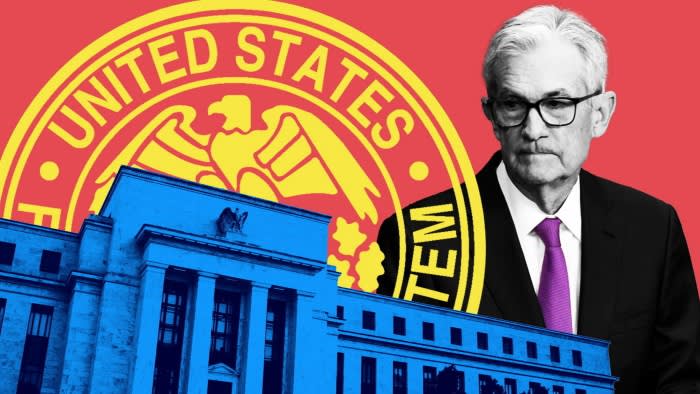Unlock the Editor’s Digest for free
Roula Khalaf, Editor of the FT, selects her favourite stories in this weekly newsletter.
US Federal Reserve officials indicated on Wednesday that they still expected to cut interest rates by 75 basis points this year, a sign of confidence that inflation is cooling sufficiently to reduce borrowing costs.
The rate forecasts, published by the US central bank, came as the Federal Open Market Committee voted unanimously to leave rates unchanged at a 23-year high of 5.25 per cent to 5.5 per cent.
The latest statement from the Fed means that borrowing costs that were driven higher in a bid to quell a bout of inflation as the economy emerged from the Covid-19 pandemic are likely to begin falling just months before the US presidential election in November.
The Fed’s so-called dot plot showed that a growing number of officials were coalescing around the view that rates would end 2024 at 4.5 per cent to 4.75 per cent, equivalent to three 25 quarter-point cuts, in line with December’s dot plot.
The dot pot showed a more hawkish slant from rate setters, with fewer officials predicting deeper cuts than in previous forecasts.
The Fed’s policy statement was little changed from its vote in January, though a reference to a slowdown in the labour market was removed. “Job gains have remained strong, and the unemployment rate has remained low,” the FOMC said.
Stocks rose and shorter-dated Treasury yields fell after the Fed kept three cuts on the table for 2024. The blue-chip S&P 500 briefly rose to an all-time intraday high. The two-year Treasury yield, which moves with interest rate expectations, fell to its lowest level in a week.
Markets have moved into line with the Fed’s forecasts, reflecting a shift in traders’ expectations for rate cuts this year amid persistent strength in the US labour market and signs of lingering inflation, especially in the services sector.
Investors started the year pricing in six quarter-point moves, beginning in March. Ahead of the Fed vote on Wednesday they anticipated three cuts by the end of 2024, beginning in June or July.
Fed officials, meanwhile, believe that strong growth and low unemployment has bought them time to keep rates higher for longer, and only want to lower borrowing costs when they become more confident that inflation is on course to hit their 2 per cent goal.

